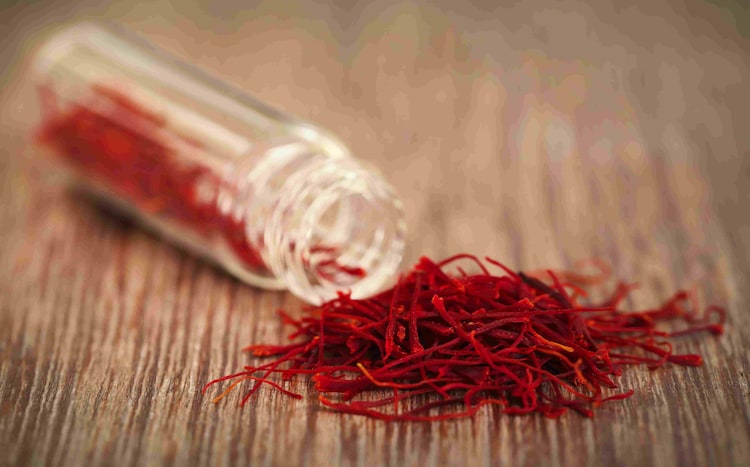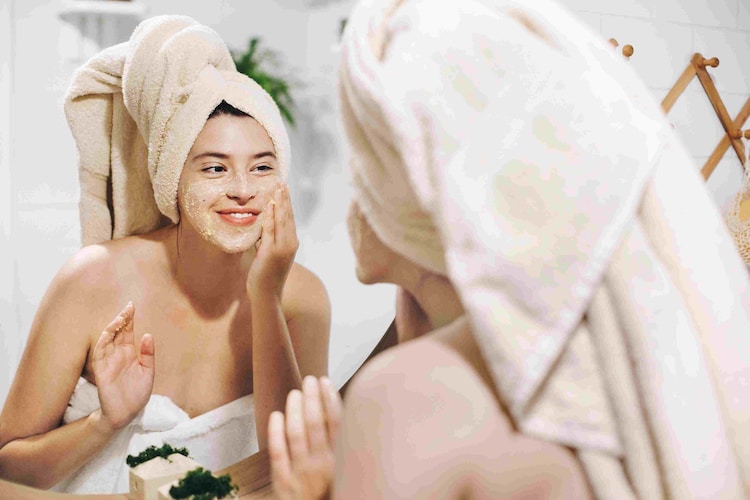Can saffron priced at Rs 3 lakh per kg solve all your skin problems?
Saffron may work wonders for your skin, but it is one of the most expensive spices in the world. When it comes to skin care, are you in the mood to spend or save?
in short
- Saffron is good for skin, but it can be costly in your daily routine
- It brightens the complexion, helps deal with acne and reduces inflammation
- You can easily make DIY serum, oil or face mask using saffron
If you have always relied on the age-old remedies of your grandmothers and grandfathers, you will agree that our kitchens are filled with ingredients that are beneficial not only for our gut health but also our skin.
Many of us already rely on curry leaves for hair health and use raw garlic for acne relief. Recently, however, the spotlight has turned to saffron on social media, with influencers promoting it as a solution to various skin care issues.
Given that this fabulous spice can sell for up to Rs 3,00,000 per kilogram in India, it’s worth asking: Do skin care experts really recommend adding saffron to your routine?
First things first… is saffron good for skin?
Saffron threads are obtained from the delicate, red stigmas of the Crocus sativus flower, commonly known as the saffron crocus. Since approximately 75,000 flowers are required to produce one pound of saffron, it is one of the most expensive spices in the world.
Meanwhile, giving green signal to saffron for skin, Dr. Srishti, beauty therapist and founder of Aviv Aesthetics in New Delhi, says India Today That this spice is beneficial for every type of skin.
She says, “It brightens the complexion, helps fight acne and reduces inflammation. Saffron is especially good for dry, sensitive and acne-prone skin in terms of nutrition, moisture and balancing oil levels. It’s much better than.”
Additionally, Dr Neeti Gaur, dermatologist and founder of Citrine Clinic in Gurugram, mentions that saffron is often used in lotions, moisturizers and de-pigmentation and anti-aging products.

Studies also claim that saffron can protect against UV radiation. Throwing light on this, Dr Nirupama Parvanda, dermatologist and founder of Zoli Skin Clinic in New Delhi, says that research on saffron’s high crocin and safranal concentrations suggests that it may protect the skin from harmful UV rays, reduce inflammation. May help promote healing and wound healing. ,
“Tyrosinase, an enzyme that produces melanin, is inhibited by saffron, which is why it lightens the skin and reduces hyperpigmentation. Although these claims are promising, there is little evidence for these uses as a skin care ingredient. More intensive clinical research is needed to fully validate saffron’s effectiveness in the U.S., says Dr. Parwanda.
let’s move towards profit
- Antioxidant: Saffron is rich in antioxidants, which can help protect your skin from free radicals that cause premature aging and photodamage.
- anti inflammatory: Saffron can help soothe irritated skin, reduce redness, and ease discomfort.
- skin glow: Saffron naturally brightens the skin, reduces pigmentation, dark spots and blemishes.
“Saffron stimulates both collagen and hyaluronic acid synthesis, promoting firmer, brighter, thicker, healthier and more even skin. It also improves blood circulation and oxygenation of tissues,” says Dr. Gaur.
According to Dr. Srishti, saffron also helps hydrate the skin and reduce the appearance of fine lines, while acting as an antibacterial agent to combat acne.
Dry Saffron vs Saffron Oil
Dried saffron threads and saffron oil differ in form, extraction process, uses, and potency. While saffron threads are the pure, unaltered stigmas of the Crocus sativus flower, saffron oil is made by mixing dried saffron threads in a carrier oil such as almond or jojoba oil.
Dr Srishti explains that, like dried saffron, saffron oil also brightens the skin, reduces inflammation and fights acne. “In oil form, it’s more concentrated, making it effective for deep hydration and absorption, while dried saffron works well in masks or infusions, which provide gradual, long-term benefits,” she says.
On the other hand, Dr. Parwanda says that the benefits of dried saffron and saffron oil are comparable, but their applications and concentrations are different.
“Saffron oil is useful for skin care as it retains its antioxidant and skin-lightening properties even when mixed with carrier oils. Dried saffron when added to food or tea, improves digestion and “There are wide-ranging health benefits, including improving mood. Although both have antioxidant properties, dried saffron is consumed internally for health, while saffron oil is often applied externally.”
Want to incorporate saffron into your DIY routine?
If you’re looking to experiment with saffron in your skin care routine, try incorporating it through serums, oils, or face masks.
Dr Srishti suggests mixing it with curd and turmeric to brighten the skin, rose water for a soothing toner or honey to treat acne blemishes.
She adds, “These simple tricks provide hydration, reduce pigmentation, and promote a glowing complexion.”

Here is a simple saffron and honey facial scrub recipe written by Dr. Parvanda:
- Grind saffron threads in a small vessel and make a fine powder.
- Mix honey and saffron powder.
- Add the almond flour or finely ground oats and stir until a thick, gritty mixture forms.
- Using light circular strokes, massage the saffron scrub into wet skin, paying special attention to rough spots.
- Let the saffron work its magic by leaving it aside for a few minutes.
- Wash your skin with warm water, pat dry and apply your favorite moisturizer.
be cautious
When you start using saffron in your skin care routine, apply a small amount at first, as excessive use can cause irritation, especially on sensitive skin. It is also essential to select high-quality, authentic saffron to prevent allergic reactions and ensure best results.
Additionally, Dr. Gaur advises that saffron may not be safe for people with pollen allergies, and pregnant women should also avoid it.
cost factor
“Although saffron provides excellent benefits for the skin, its price may not be affordable for everyone,” says Dr. Srishti. She adds that for those who don’t want to splurge, alternatives like turmeric or licorice root can provide similar benefits.
Turmeric and licorice root, for example, brighten the skin, reduce pigmentation, and have anti-inflammatory effects, making them great alternatives to saffron in skin care.
Dr. Parwanda also mentions some alternatives, “There are reasonably priced options available like rose oil and aloe vera. Rosehip oil helps with pigmentation and anti-aging, while aloe vera hydrates and soothes the skin “These options make beauty rituals more affordable.” “Affordable ways to take care of your skin without the high price of saffron.”







